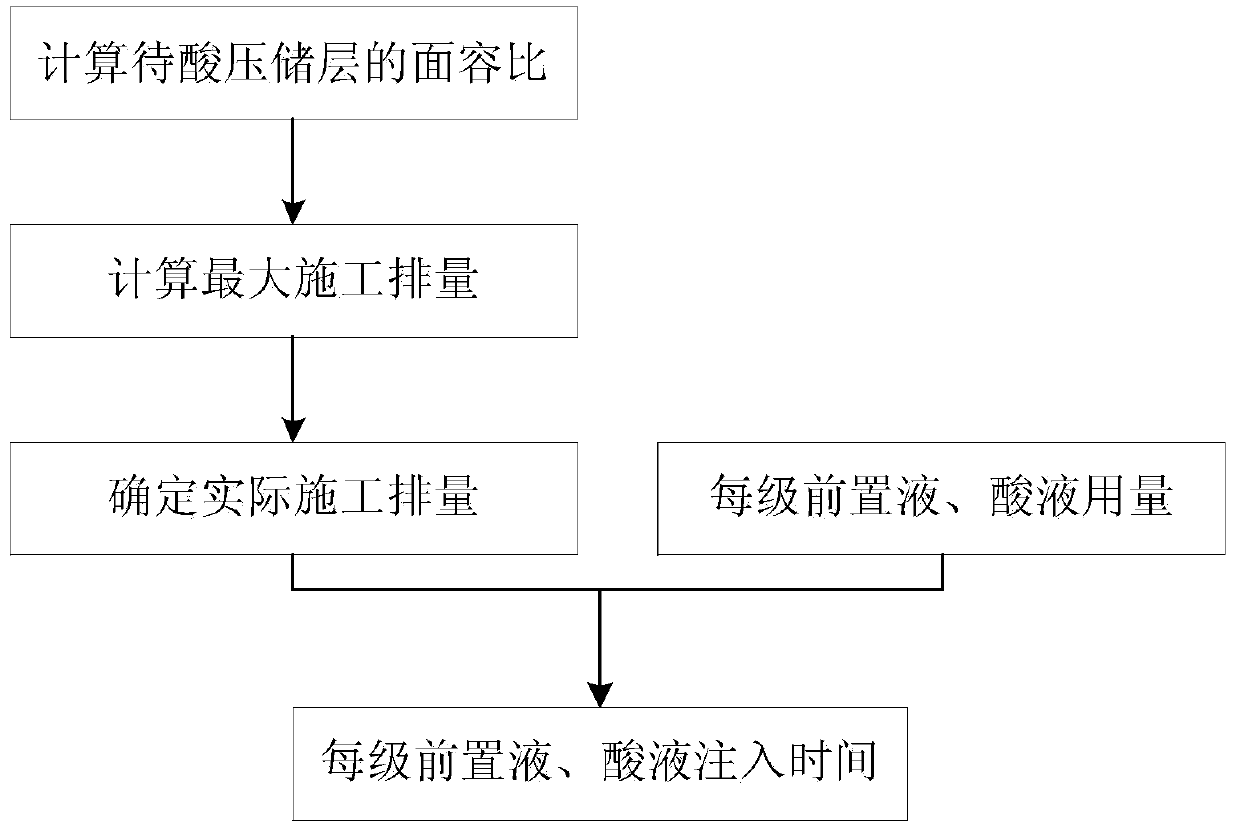Carbonate reservoir multistage alternating acid fracturing displacement optimization method
A technology for carbonate reservoirs and optimization methods, which is applied in earthwork drilling, production fluids, boreholes/well components, etc., can solve problems such as lack of consideration of reservoir factors, improve acid fracturing effects, and increase drainage The effect of increasing the flow area and increasing the length
- Summary
- Abstract
- Description
- Claims
- Application Information
AI Technical Summary
Problems solved by technology
Method used
Image
Examples
Embodiment 1
[0038] Such as figure 1 A method for optimizing displacement of carbonate reservoirs by multi-stage alternating acid fracturing includes the following steps:
[0039] (a) Calculating the surface-to-volume ratio of the reservoir to be acid fractured Among them, S: Reaction area of reservoir rock; V: Volume of acid liquid participating in the reaction;
[0040] Specifically, the reservoir types are classified first, and different formulas are used to calculate fundamentally different classification results:
[0041] If the reservoir flow channel is a pore, then Where d is the average diameter of the pores, and L is the average length of the pores;
[0042] If the reservoir flow channel is a horizontal fracture, then where R f is the average radius of the horizontal crack, W is the crack width;
[0043] If the reservoir flow channel is a double-wing vertical fracture, then Where W is the width of the crack, H is the height of the crack, and L is the length of the s...
Embodiment 2
[0052] Such as figure 1 A method for optimizing displacement of carbonate reservoirs by multi-stage alternating acid fracturing is shown. On the basis of Example 1, the dosage of the pre-fluid and acid fluid is increased step by step. The pre-fluid is 3%-15% hydrochloric acid solution. The total amount V of prefluids at all levels satisfies V=V'+V p , where V' is the volume of hydrochloric acid solution required to dissolve the carbonate rock within each meter of the radial range of the wellbore per unit thickness of the reservoir; V p is the total volume of pores after removal of carbonate rocks per unit thickness of the reservoir.
[0053] in, is the volume of carbonate rocks per meter in the radial direction of the wellbore, and X is the solvency. Solvency X is equal to the volume of rock divided by the volume of hydrochloric acid solution consumed. V 0 is the original pore volume of the reservoir per unit thickness.
PUM
 Login to View More
Login to View More Abstract
Description
Claims
Application Information
 Login to View More
Login to View More - R&D Engineer
- R&D Manager
- IP Professional
- Industry Leading Data Capabilities
- Powerful AI technology
- Patent DNA Extraction
Browse by: Latest US Patents, China's latest patents, Technical Efficacy Thesaurus, Application Domain, Technology Topic, Popular Technical Reports.
© 2024 PatSnap. All rights reserved.Legal|Privacy policy|Modern Slavery Act Transparency Statement|Sitemap|About US| Contact US: help@patsnap.com










